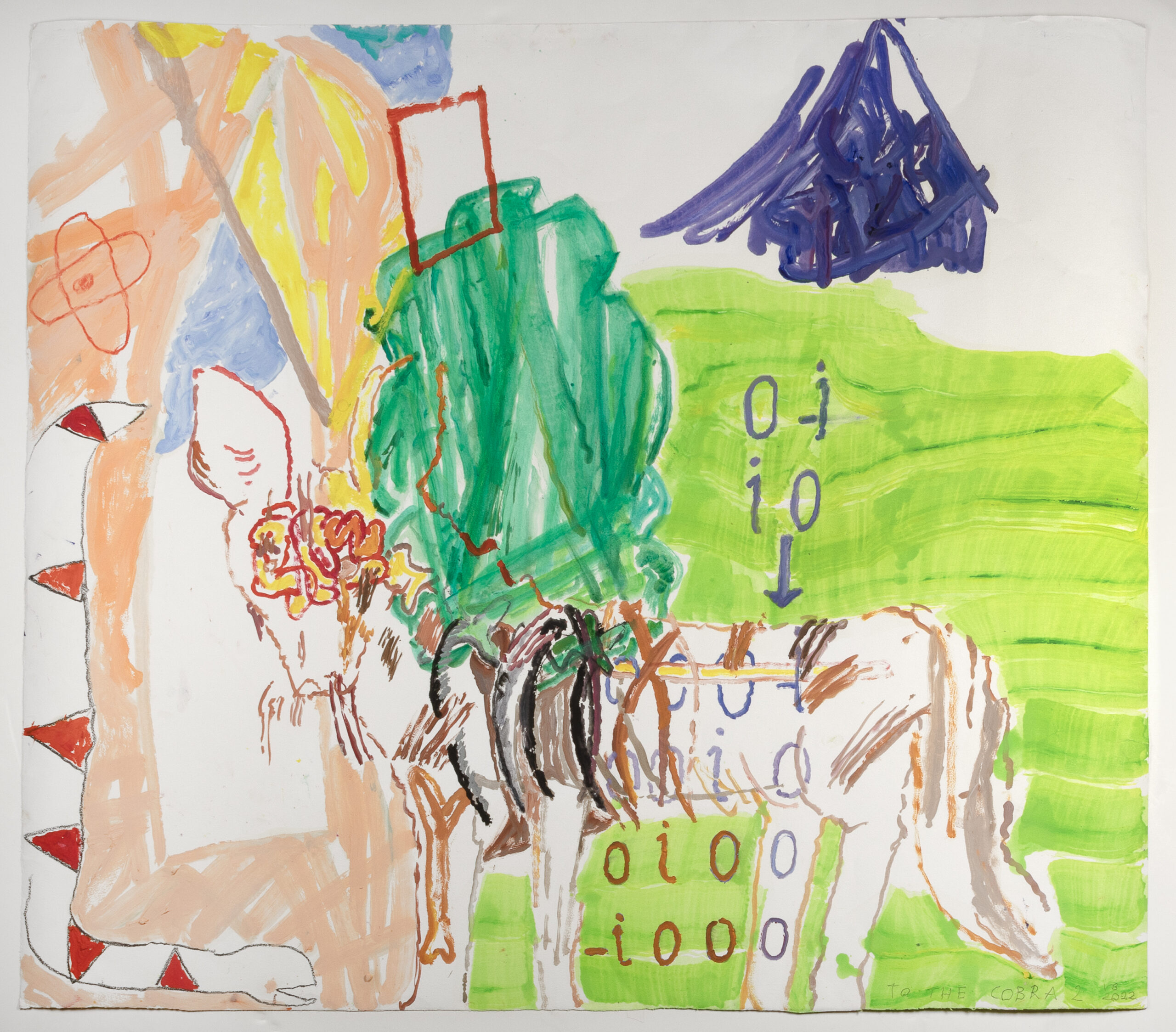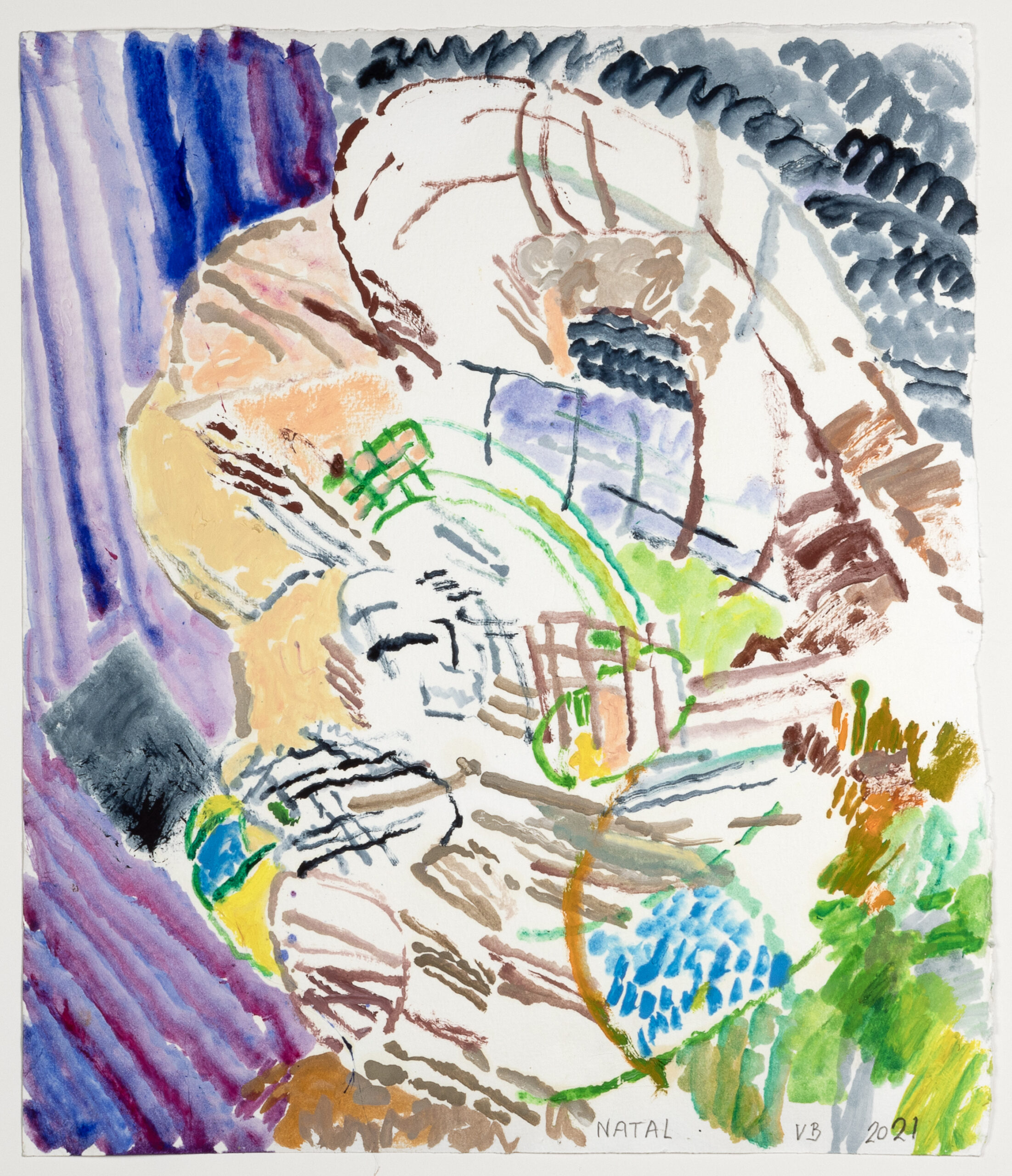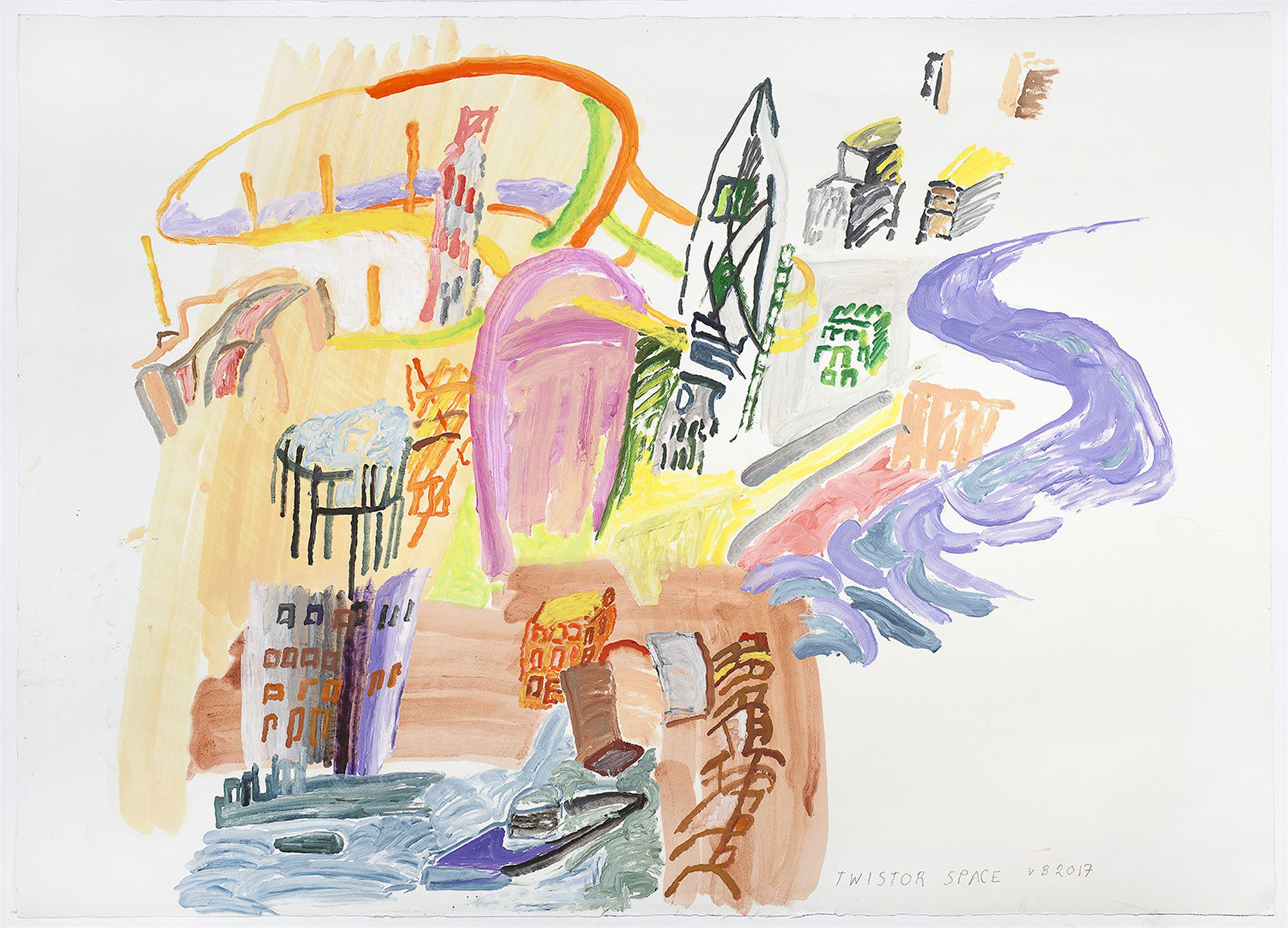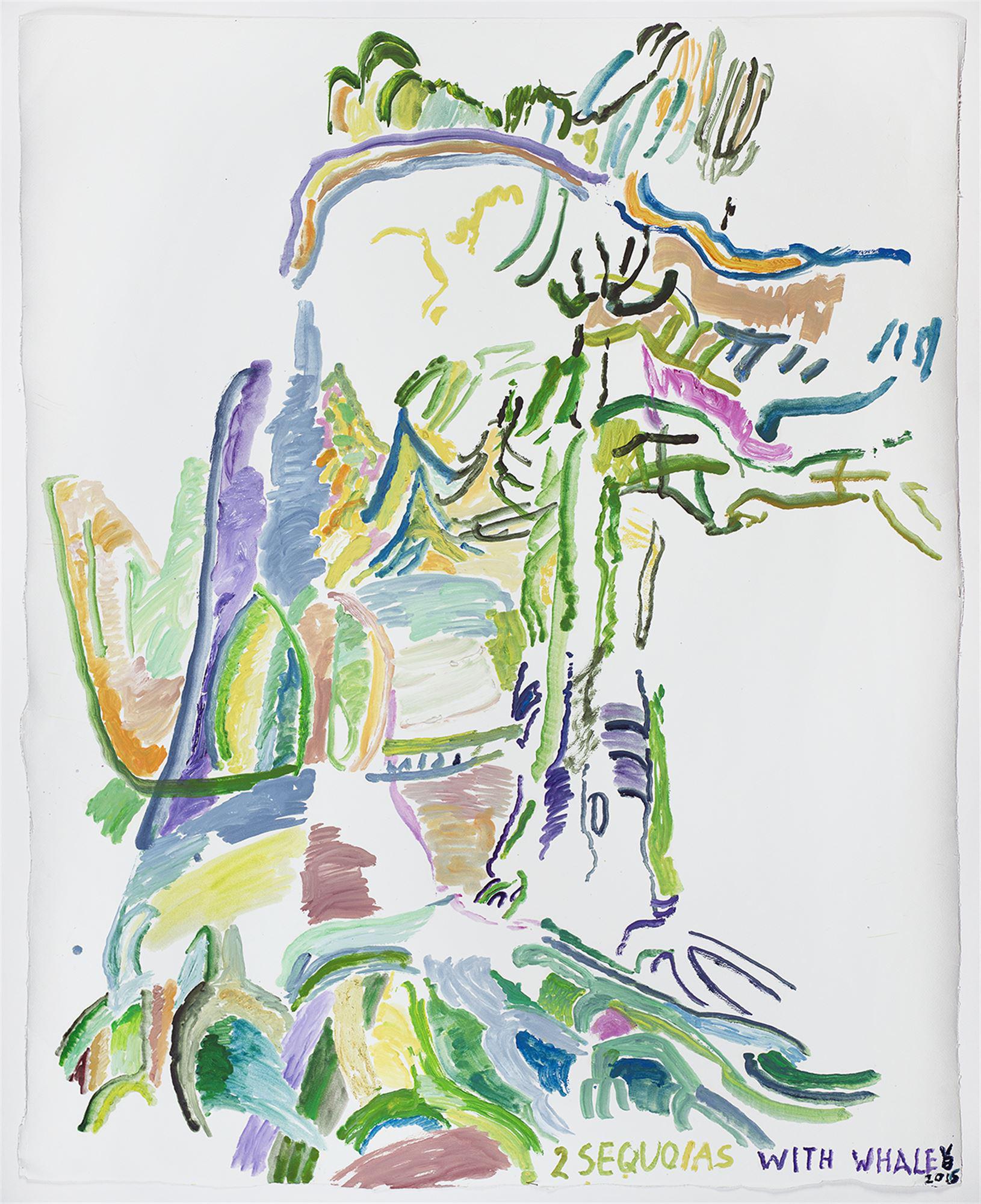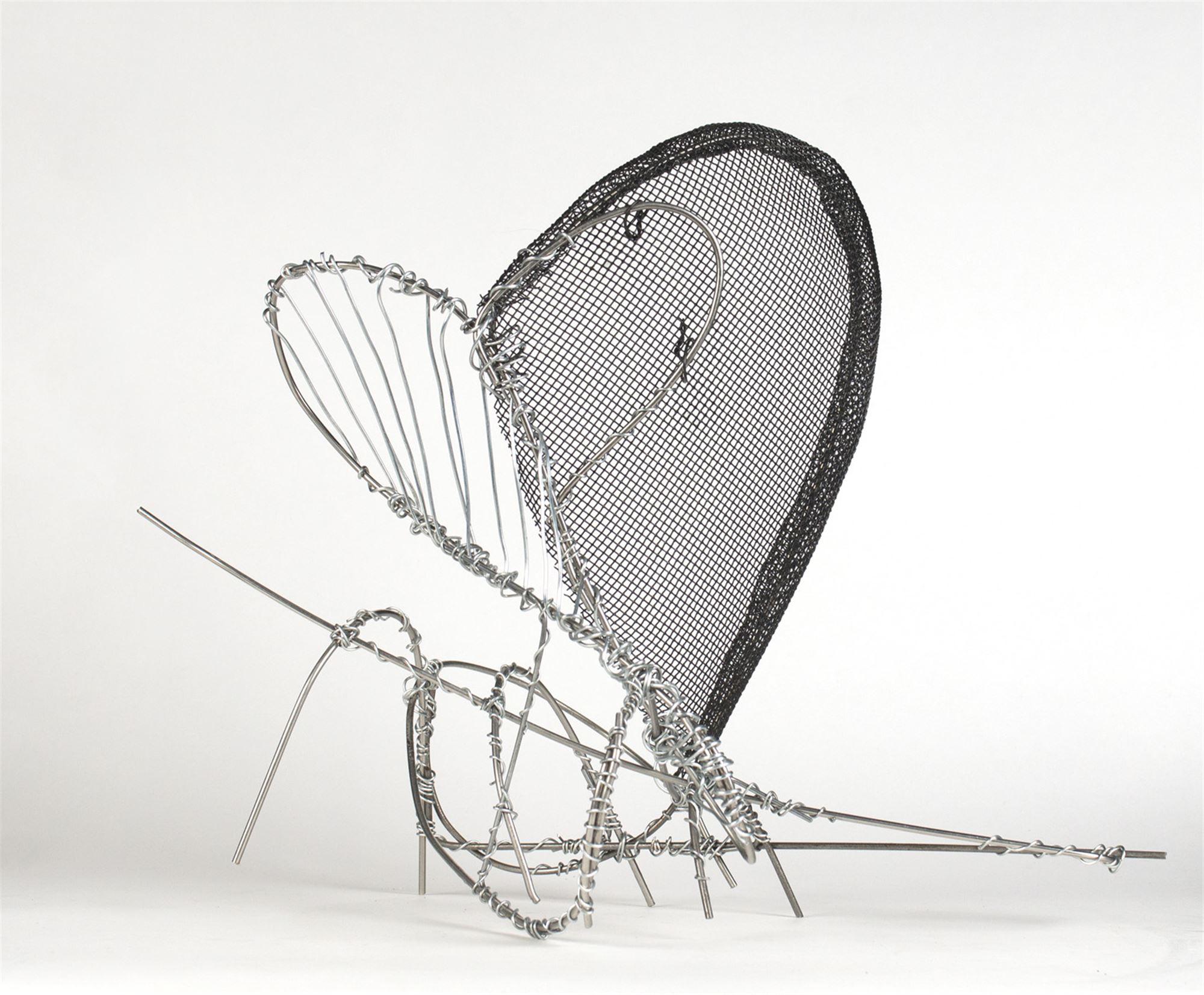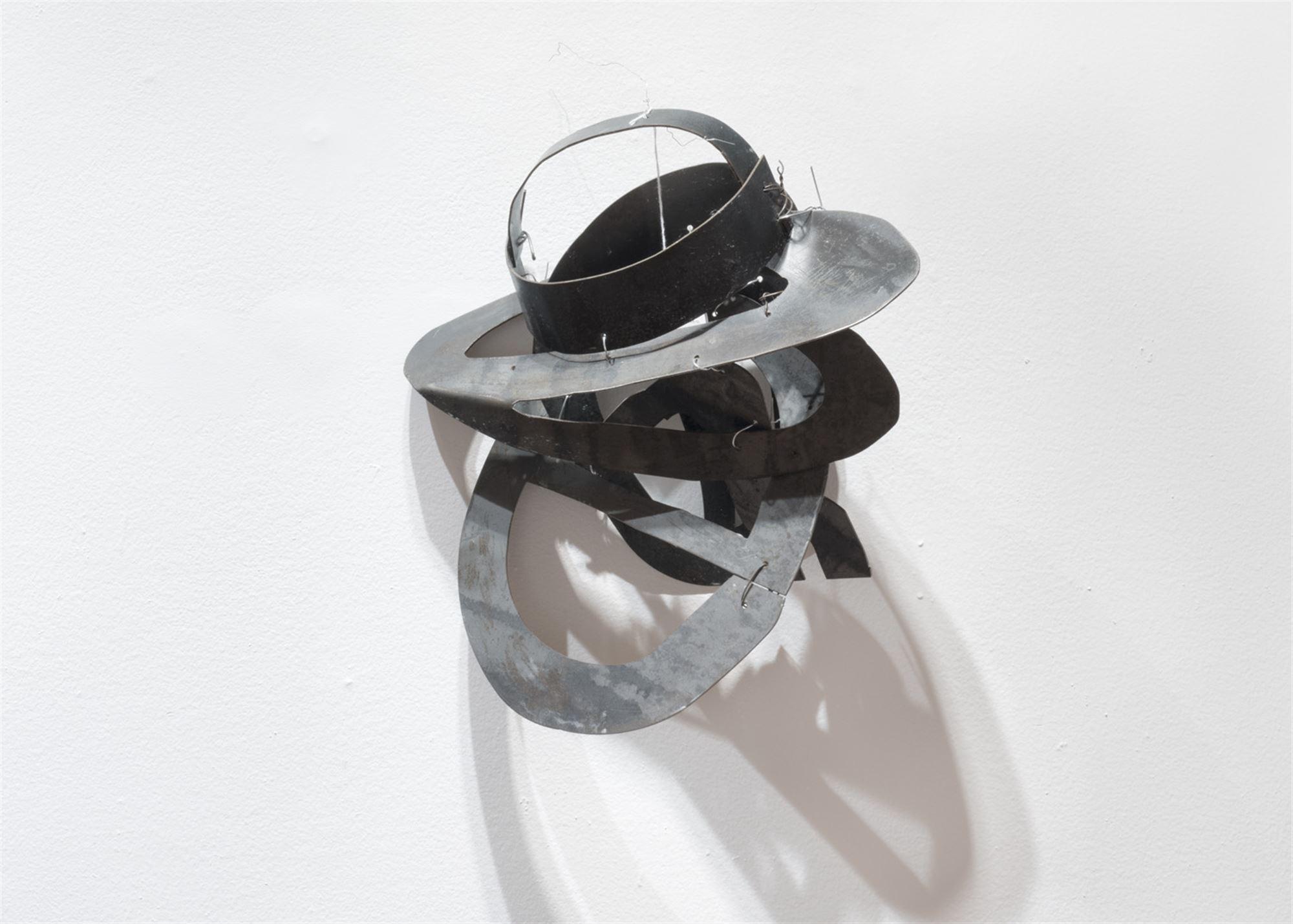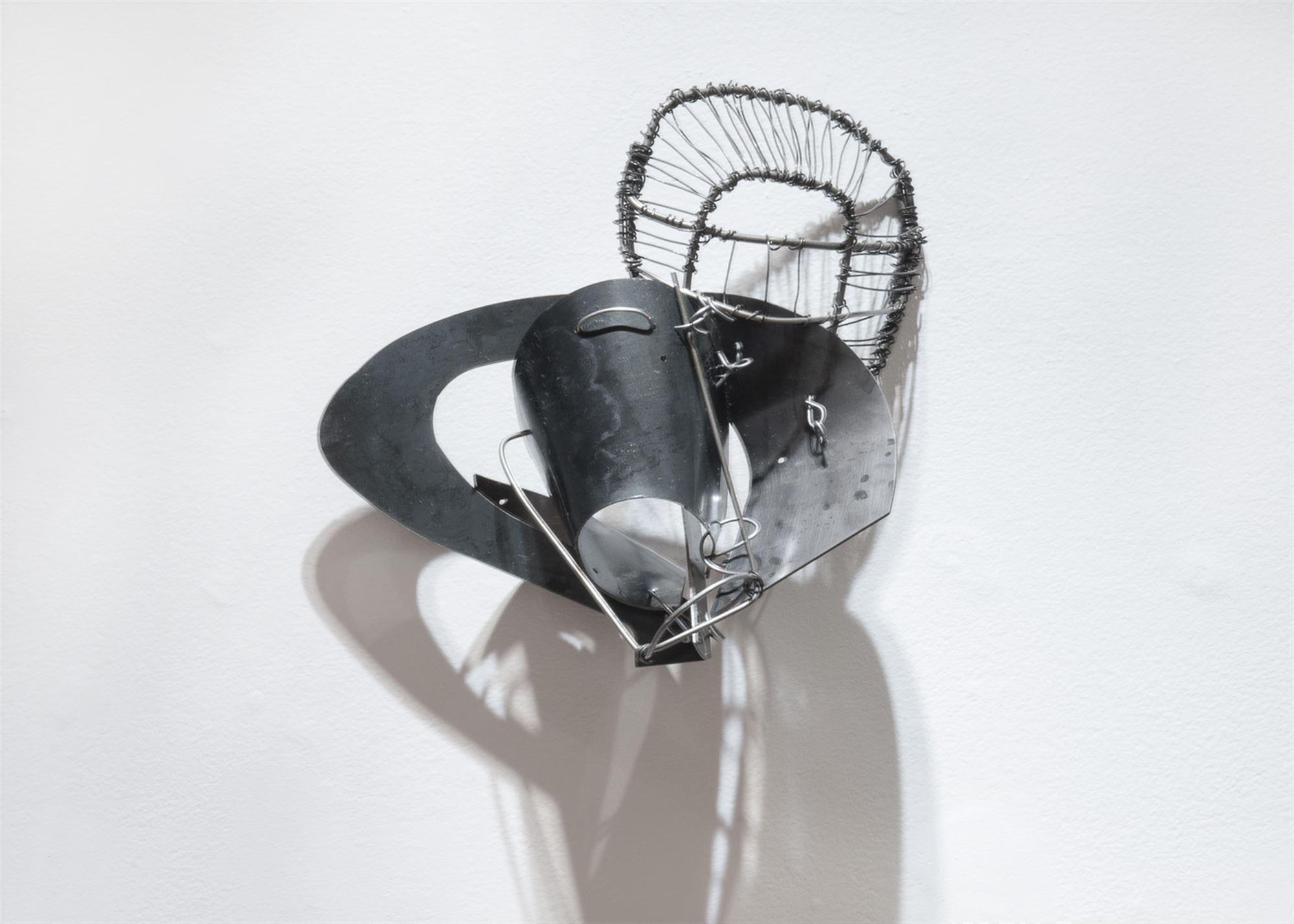Born in 1942, Victoria Bell studied art at Smith College and at the University of California, Berkeley.
Bell is among the contemporary artists who has a particularly intensive involvement with the question of inhabited space, that of the universe and its physical laws. The idea of the tree with its anthropomorphic verticality and its innate strength is of primary importance to the artist. Bell, who was a student of physics before she became an artist, is interested in the way nature exists in a precarious balance.
Bell is best known as a sculptor. She works alone with immense tree trunks using hand tools, without availing herself of the help of machines. She loves to work with her hands, with the axe, with (nonpowered) saws, chisels (and augers). With these she attacks the raw material of her art. The wood as the taking-off-point of her artistic work is here, partner and not object, and has a say in the development of the form of the works, in that Bell always works directly from the givens of the wood she has available: Tree rings, inclusions, structures and colorations; all these develop in the working process toward a condition of the sculpture itself, and, so to speak, are addressed by the artist and worked into the piece. In this context Bell’s sculpture is indeed comparable to painting, but more out of dealing spontaneously with the matter itself, in the working process, with the substance.
Since 1972 she has been building relatively monumental sculptures out of wood and metal, informally abstract but not conceptually. They relate to the cosmic, to the laws of nature, to the large dimensions of time and space, to history and to life. However they are never illustrations of a theme, but standing on their own throughout, many-sided, and dynamic sculptural creations in space.
Bell’s sculptures are constantly conveying new points of view and stimulating perspectives in her development of significant form, in her inspiring ideas and manifold interpretations of space, so that the followers of her art patiently awaiting new works will always have surprises in store fort hem again and again. Bell most likely takes her own words seriously, noted down in 1988, “Something in the universe is always being irretrievably lost – one cannot go back along the same path. Bell defines it for herself: “Sculpture is landscape”. One is led to want to go on, in this sense, agreeing that in the landscape of Bell’s sculpture a cosmos of living beings, events and time turns up again.




